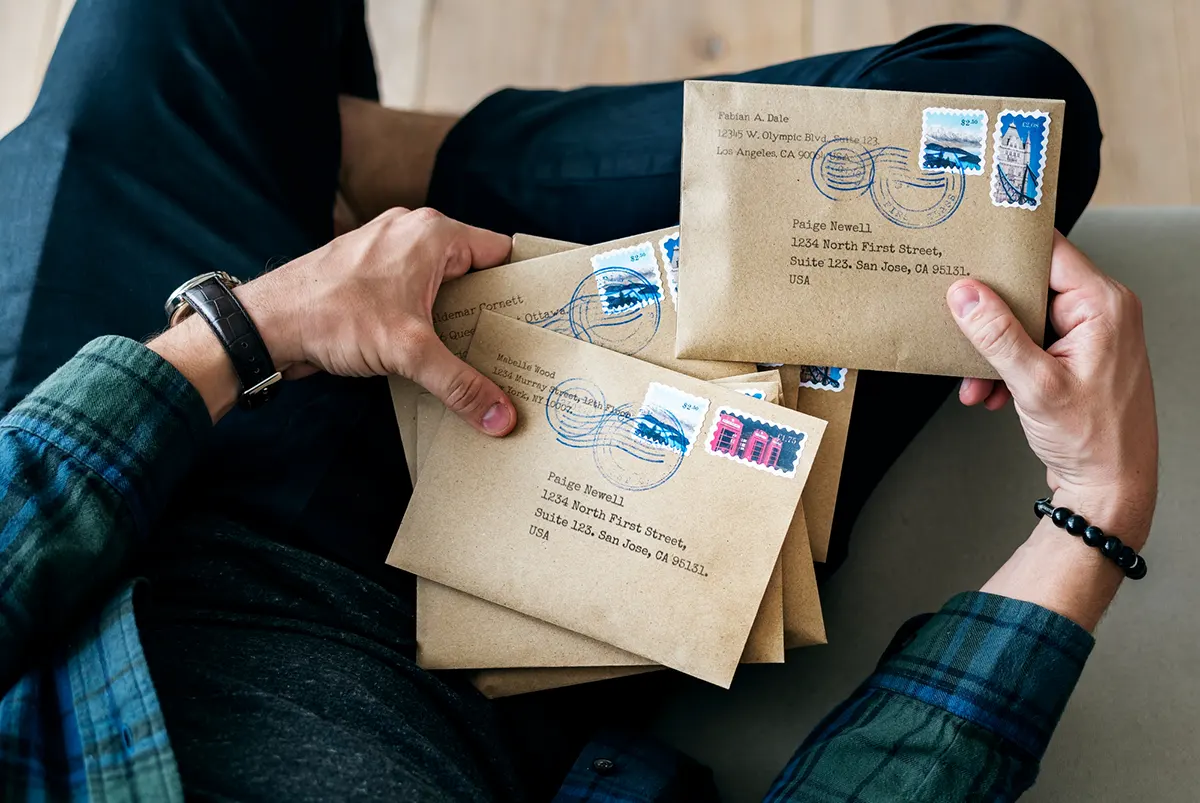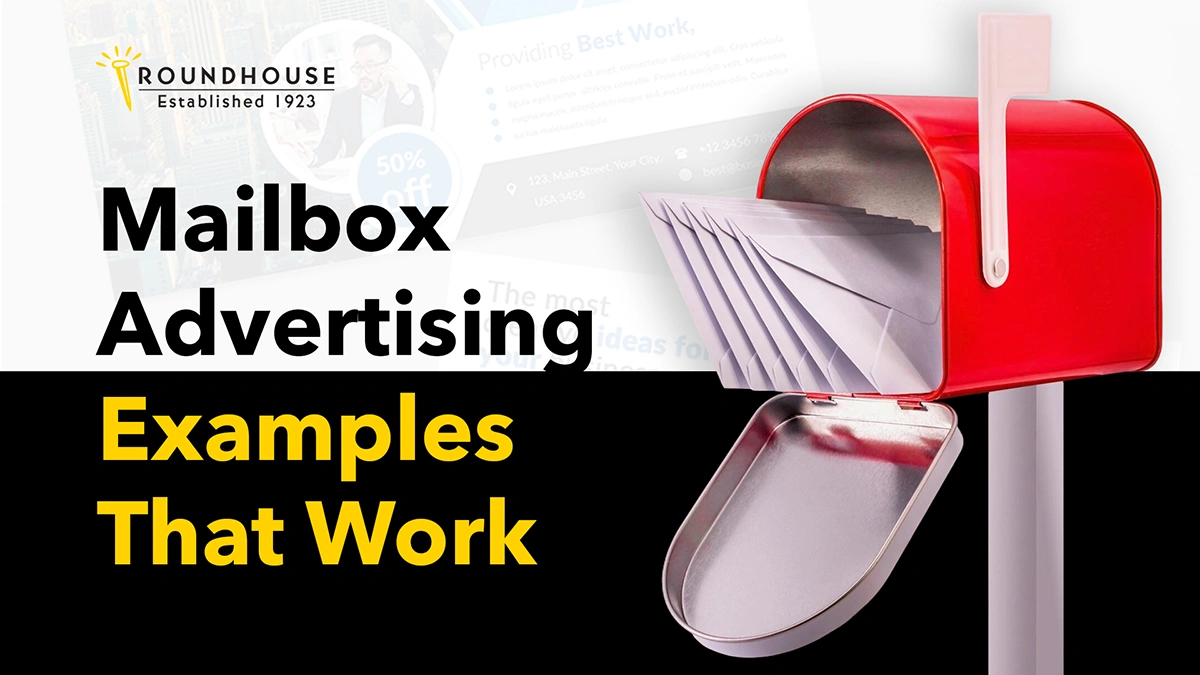Mailbox Advertising Examples That Work
Deleting a promotional email is almost a muscle memory to most people. But an ad directly pulled from the mailbox? It demands attention the moment it’s in your hands. Around 61% of marketers say those seconds are worth fighting for because direct mail campaigns continue to deliver some of the strongest response rates.
In this post, we’ll break down mailbox advertising examples that prove creative thinking plus smart tactics can yield strong results. We’ll also let you in on exclusive insights to use these strategies in your own campaigns.
Integration with Digital Channels
A physical mail piece works best when it’s not working alone. By combining print and digital channels, you create a cohesive customer journey that feels connected, personal, and easy to follow. This integration not only boosts engagement but also improves brand recall and conversion rates.
You can think of direct mail as the spark. Its goal is to capture attention in a tangible and personal way that digital ads often can’t. Meanwhile, digital channels like email, social media, and targeted ads keep that conversation alive. When these two methods work together, they build momentum from print that draws people in, to digital that keeps them engaged.
When done correctly, integrating direct mail with digital campaigns helps you:
- Increase touchpoints: Reach customers across channels for better visibility and retention.
- Track performance: Use trackable QR codes, unique URLs, or campaign tags to monitor engagement.
- Personalize follow-ups: Align your digital messages with the content of your mail piece for consistency.
- Strengthen brand trust: Consistent visuals, tone, and offers across platforms reinforce credibility.
Both worlds help you build a connected brand experience that stays with your audience long after they’ve closed the envelope or clicked away.

Personalized & Targeted Postcards
In direct mail marketing, personalization is what separates a generic piece from one that actually brings in results. Instead of sending identical postcards to everyone on your list, try customizing key elements like names, images, or offers based on what you know about each recipient. This makes the postcard feel more intentional, not mass-produced.
That emotional connection is a significant advantage, especially if your prospects are experiencing digital fatigue. Receiving a postcard designed with care and relevant to their needs can feel refreshingly personal. Thus, signaling to them that the brand took time to reach them and build trust.
Personalization doesn’t mean simply adding someone’s first name to a message; it’s about adding relevance to your message. You can start by segmenting your mailing list based on behavior, demographics, or past purchases. Then, pair it with a copy that speaks directly to their needs or challenges. When done right, a personalized postcard can feel like a real conversation that drives real action.
QR Codes and Augmented Reality in Mail
It’s no longer impossible to combine physical mail with digital experiences. In fact, modern direct mail advertising is becoming more interactive than ever, thanks to QR codes and augmented reality (AR). They’re now allowing a smoother move from holding a printed mail to exploring a web experience in a single scan.
In just one scan of a printed mail, recipients can explore a landing page, watch a demo, or unlock time-sensitive offers. It keeps your prospects engaged while making it easier for marketers to measure results. Every scan, click, or action can be tracked, giving you valuable insights into what’s working and where to improve.
Beyond convenience, this approach adds a layer of curiosity and surprise. Recipients are no longer passive readers—they become active participants. A static mail piece suddenly turns into an interactive experience that tells a richer story and extends the time people spend engaging with your brand.
Dimensional Mailers
It’s easy to overlook a flat envelope, but a dimensional mailer instantly stands out. Boxes, pop-ups, or uniquely folded pieces grab attention and spark curiosity even before the recipient opens it.
These types of direct mail materials go beyond visual appeal; they create a tactile experience. Since it engages with more senses, recipients see and feel your message. This physical connection helps your message stick longer in memory than a digital ad or standard email ever could.
Apart from that, it also has a psychological effect. It allows your prospects to get a sense of value. When someone receives a well-designed box or uniquely folded piece, it feels like a gift rather than a promotion. That perceived value encourages recipients to open, keep, or even share it—extending your campaign’s reach organically.
If you’re planning to include dimensional mailers in your campaign, keep a few things in mind:
- Design with purpose: Make it simple but intriguing to avoid cluttered visuals.
- Connect it with a broader strategy: Include a clear next step, like a QR code, promo code, or digital link, to continue the engagement.
- Test first: These pieces cost more to produce and ship, so start small with an A/B test, measure the results, and adjust before rolling out larger batches.
Story-Driven Direct Mail
Not every piece of direct mail needs to push for an immediate sale. Some of the most powerful campaigns focus on telling a story more than making an offer. Story-driven mail uses emotion, authenticity, and narrative flow to connect with people on a deeper level.
A well-written letter or a series of themed mailers can walk recipients through your brand’s journey, values, or customer experiences. This approach humanizes your message. Instead of feeling like a sales pitch, it reads like a conversation. One that invites people to understand who you are and why your brand exists.
Storytelling builds emotional connection, which naturally leads to stronger brand recall and long-term trust. It’s especially effective for nonprofits, service-oriented businesses, and purpose-driven brands that want to inspire loyalty rather than just transactions.

The Secret to Successful Mailbox Advertising? The Right Partner
Mailbox advertising proves that tangible experiences still hold power. A well-crafted mail piece can easily cut through the digital clutter and make a lasting impression. But knowing what to send is only half the battle. Most businesses find it challenging to bring that vision to life. The process stalls when they need to turn an idea into something designed, printed, and delivered with precision.
That’s why success in direct mail isn’t just about having a great concept. It’s about having a partner who can bring it all together with precision, creativity, and reliability.
At Roundhouse, we’re more than just a marketing vendor. We’re your full-service execution partner, equipped to handle every stage of your campaign under one roof. From creative concept to final delivery, our team ensures your brand looks its best—every time, everywhere. We don’t just “handle” your direct mail. We share your vision and take ownership of your success.
So if you’ve got a campaign idea but aren’t sure how to bring it to life, we’ve got you covered. Let’s turn your next idea into something your audience can hold and remember.
Reach out to the Roundhouse team today!
FAQs About Mailbox Advertising
- What is mailbox advertising?
Mailbox advertising, also known as direct mail marketing, refers to sending printed promotional materials (postcards, letters, or dimensional mailers) directly to a recipient’s mailbox. It aims to capture attention offline and often links to online actions. - Is mailbox advertising still effective?
Yes, direct mail remains one of the most trusted and effective marketing channels. When executed strategically with strong design, clear messaging, and proper targeting, mailbox advertising can help you reach new prospects and expand your brand’s reach. - How can I make my mailbox advertising campaign successful?
Start by understanding your audience and crafting a message that feels personal and relevant. Keep your design clean but eye-catching, with a clear call-to-action that tells recipients what to do next. Use tracking tools like QR codes, personalized URLs, or promo codes to measure results and improve future campaigns.
